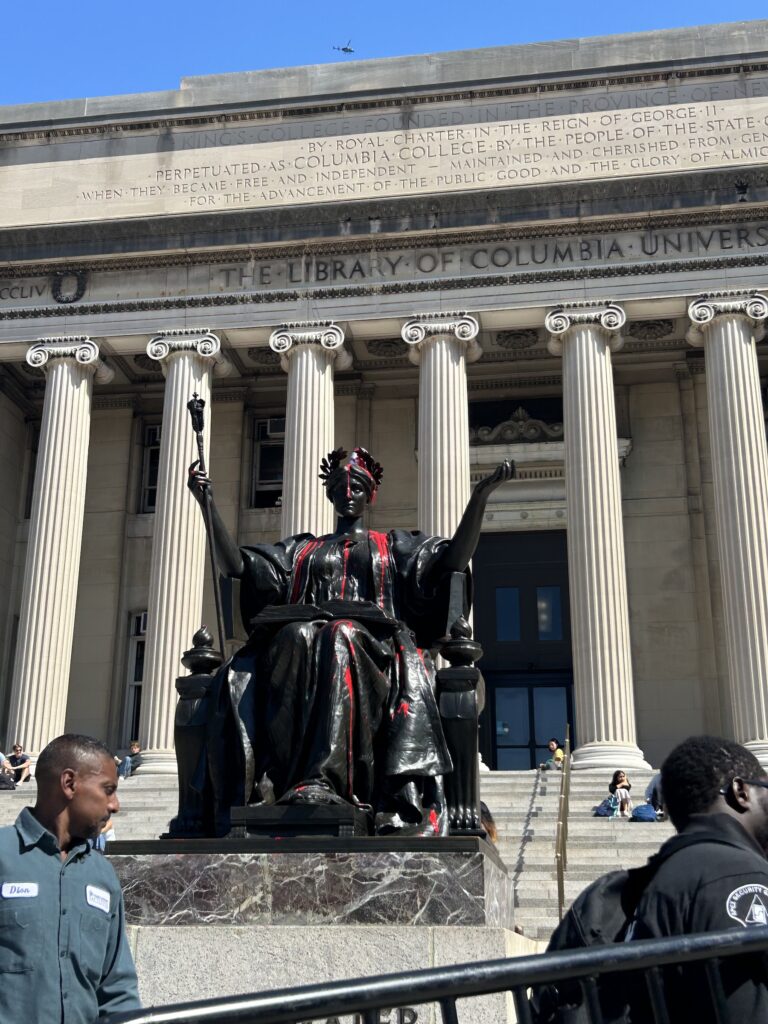Unidentified protesters threw red paint on the bust of the famous “Alma Mater” (1903) statue on Columbia University’s Manhattan campus on Tuesday, September 3, the first day of school. After Columbia University Apartheid Divest.
Although Students for Justice in Palestine, which was recently permanently banned by Meta, and CUAD on X reposted photos of the paint-soaked bronze, both organizations claimed responsibility. The action may have been the work of an autonomous group, a term also used by CUAD and the SJP to describe individuals who organized an occupation of Hamilton Hall earlier this year and outside the official residence of then-President Minoush Shafiq before she resigned A screaming protest was coordinated.
“This action underscores the student body’s refusal to forget that the same administration is currently welcoming us with naive but predictable pomp and circumstance,” said Anand Chitnis, a current Columbia University senior and vice president of campus life for the Student Union. Tell us. allergic.
“From what I understand, we students refuse to abide by the administration’s apparent amnesia about the past semester,” Chitnis continued.


Photo provided to allergic exhibit Maintenance workers use a power washer to remove paint from the “Alma Mater” statue. At the end of the day, the official Columbia University Instagram account shared a photo of students posing in front of the clean statue on its Stories.
“Alma mater” was designed by artist Daniel Chester French, who also sculpted the Lincoln Memorial in Washington, D.C. “Alma mater” is an important symbol of the campus. Students often pose in front of the sculpture to commemorate the start of school, and again at the end of the year in their graduation gowns.
However, following Hamas’s attack on October 7 and Israel’s continued attacks on Gaza, the statue has taken on new meaning. Located in the heart of campus, Alma Mater was the site of several historic moments during student protests in April, which resulted in hundreds of NYPD officers raiding Hamilton Hall.

The sculpture was just steps away from where students booed during a speech by House Speaker Mike Johnson calling for the arrest of students who perpetuate “hate and anti-Semitism.” Organizers also use the venue as a communications center, holding press conferences at its feet.
For Anand, it wasn’t the most distracting moment of the first day of classes.
“Closed doors are more disruptive than any protest, leaving students and staff stuck in endless lines trying to get to class,” Anand said.
After the spring protests, the university implemented a color-coded access system that tells students, faculty and non-affiliated institutions when access to campus is allowed or restricted. The new policy is similar to the pandemic-era contact tracing system that limited students’ movement on campus based on their assigned colors.
“I long for the day when protests become a point of pride for the university community and a means of achieving tangible change,” Anand said.


